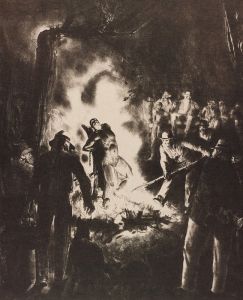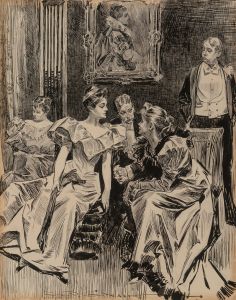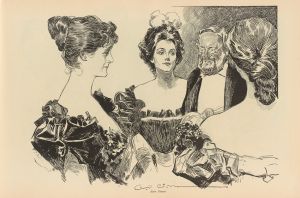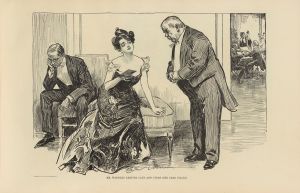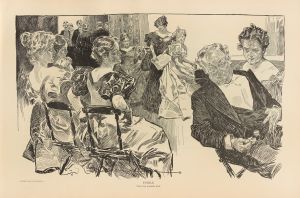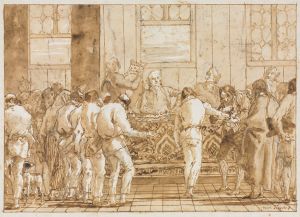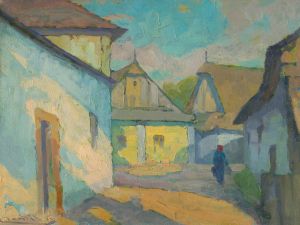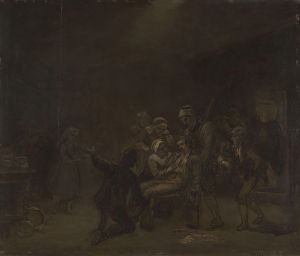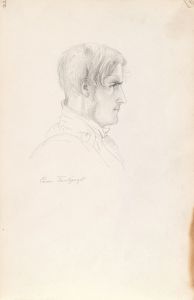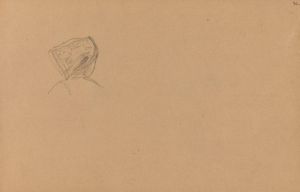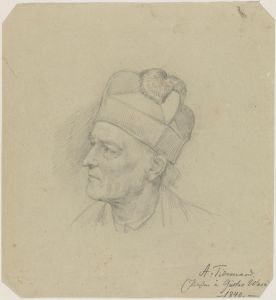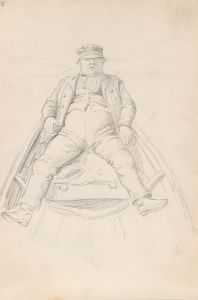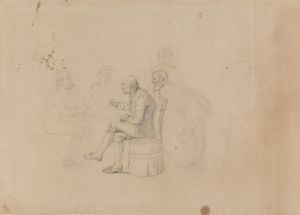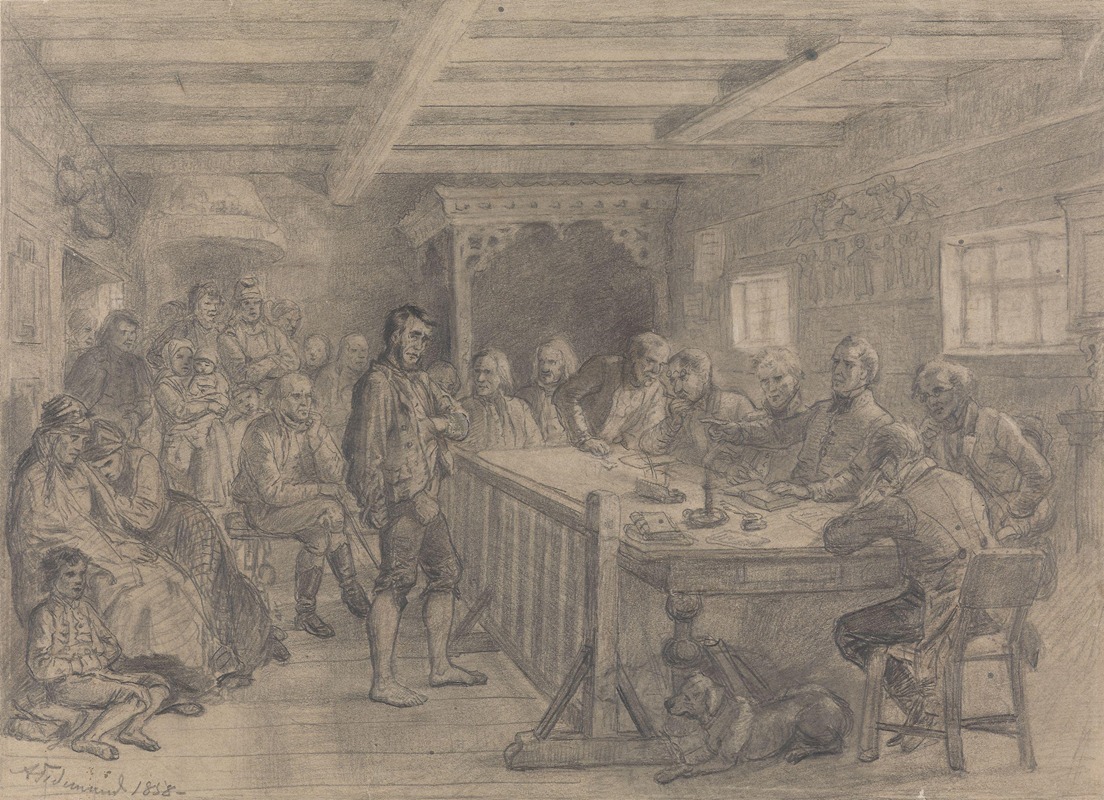
En rettsscene på landet
A hand-painted replica of Adolph Tidemand’s masterpiece En rettsscene på landet, meticulously crafted by professional artists to capture the true essence of the original. Each piece is created with museum-quality canvas and rare mineral pigments, carefully painted by experienced artists with delicate brushstrokes and rich, layered colors to perfectly recreate the texture of the original artwork. Unlike machine-printed reproductions, this hand-painted version brings the painting to life, infused with the artist’s emotions and skill in every stroke. Whether for personal collection or home decoration, it instantly elevates the artistic atmosphere of any space.
Adolph Tidemand was a prominent Norwegian painter in the 19th century, known for his detailed and realistic depictions of Norwegian rural life and folk culture. One of his notable works is "En rettsscene på landet," which translates to "A Court Scene in the Country." This painting is a significant example of Tidemand's focus on everyday life and his ability to capture the essence of Norwegian society during his time.
"En rettsscene på landet" was completed in 1852, a period when Tidemand was deeply engaged in exploring themes related to Norwegian identity and culture. The painting portrays a rural court scene, a subject that reflects the legal and social customs of rural Norway in the 19th century. Tidemand's attention to detail and his commitment to realism are evident in the way he depicts the various characters and their expressions, as well as the setting of the scene.
The composition of the painting is carefully arranged to draw the viewer's attention to the central figures involved in the court proceedings. The judge, seated at a table, is depicted with an air of authority, while the other figures, including the defendant, witnesses, and spectators, are shown with expressions that convey a range of emotions, from anxiety to curiosity. This attention to the emotional states of the characters is a hallmark of Tidemand's work, as he sought to provide a window into the human experience.
Tidemand's choice of subject matter in "En rettsscene på landet" is indicative of his broader artistic goals. During the 19th century, Norway was undergoing significant social and political changes, and there was a growing interest in defining and preserving Norwegian cultural identity. By focusing on rural life and traditional customs, Tidemand contributed to this cultural movement, providing visual documentation of a way of life that was rapidly changing.
The painting also reflects Tidemand's skill in rendering architectural and environmental details. The interior of the rural courtroom is depicted with careful attention to the textures and materials, from the wooden beams of the ceiling to the simple furnishings. This level of detail not only adds to the realism of the scene but also provides insight into the material culture of the time.
Adolph Tidemand's work, including "En rettsscene på landet," played a crucial role in the development of Norwegian art. His paintings were instrumental in shaping the national romantic movement in Norway, which sought to celebrate and preserve the country's unique cultural heritage. Tidemand's ability to combine narrative, emotion, and meticulous detail has earned him a lasting place in the history of art.
Overall, "En rettsscene på landet" is a testament to Tidemand's dedication to capturing the spirit of Norway and its people. Through his art, he offered a glimpse into the lives of ordinary Norwegians, highlighting the customs and traditions that defined their world. This painting remains an important cultural artifact, reflecting both the artistic skill of its creator and the historical context in which it was produced.





